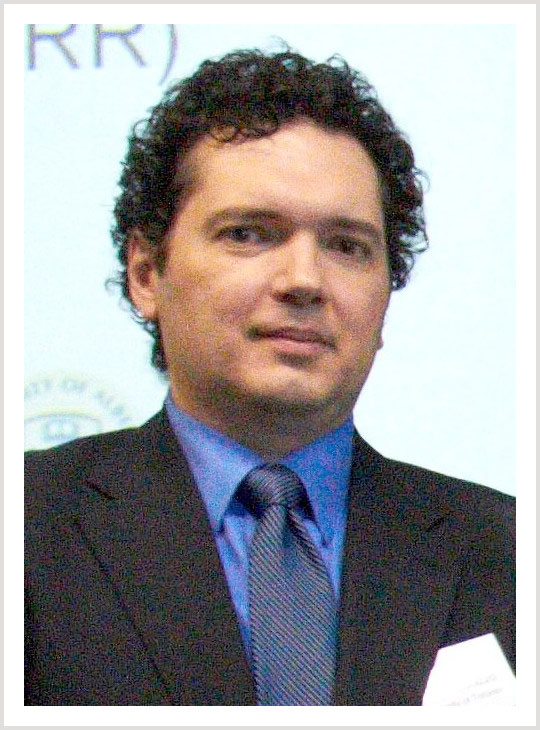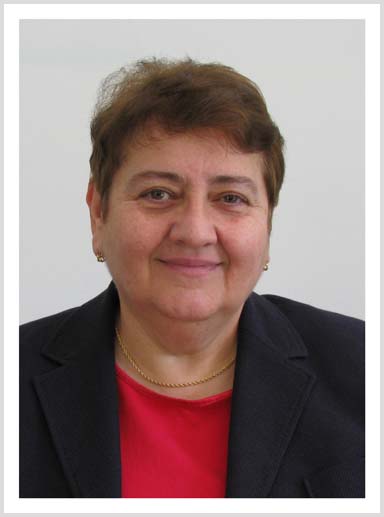The research agenda of the hSITE Network is to develop an application-driven program of engineering research to design novel, advanced communications systems and infrastructures to improve healthcare efficiency through improved workflows, patient care, and safety. hSITE research targets advances in the areas of wireless communications, networking, middleware architecture, location technologies and smart systems, with a focal goal of improving healthcare delivery and clinical workflow efficiency.
Through inter-disciplinary collaboration between clinicians, engineers and computer scientists, the hSITE research program will strive to impact the way Information Technology (IT) is used to deliver safer, more efficient and cost-effective health care to all Canadians, both in hospitals and in home care settings.
The network has been divided into three research themes:
Theme 1: Clinical Workflows and Clinical Grade Requirements
Theme 2: Context Aware Smart Sensors Systems, Software and Applications
Theme 3: Enabling Networks and Technologies
Each is linked by three crosscutting healthcare contexts: Critical care; Homecare for seniors and people with disabilities; and Knowledge translation and decision support for chronic disease management.
An implementation of the research will be carried out through Demonstrations and Prototypes.
Theme 1: Clinical Workflows and Clinical Grade Requirements
J. Cafazzo (Lead), E. Borycki, M. Carter, M. Chignell, R. Cohen, D. Doran, A. Mihailidis, E. Seto,
The objective of research in Theme 1 is to investigate and identify the clinical and engineering application specifications for advanced communications solutions for healthcare enablement from both clinical and engineering perspectives. The theme comprises two major research projects with the overall goal to study, map and analyze key clinical workflows in order to identify potential deficiencies and ensuing threats to patient safety and to establish solutions and improvements to current communication and workflow processes based on these deficiencies. Understanding will be gained through investigation of technologies at the device level (IP phones, PDAs, computers), at the application level (user interface, information interpretation) and at the architectural level (context aware networks). Identification and description of system and end users’ requirements will allow appropriate options for improving communication solutions, communication architecture, and information support to be determined. This will result in proposed communications-based enhancements that will enable improvement of system efficiencies and development of new and improved workflows.
Theme 2: Context Aware Smart Sensors Systems, Software and Applications
R. Goubran (Lead), F. Knoefel, F. Labeau, P. Liu, D. Petriu, E. Petriu
The research in Theme 2 is devoted to the design and development of context aware, smart sensing systems and software applications and user interfaces that will meet the requirements of the application space (hospital or home care setting) and support the system architecture and user requirements defined in Theme 1. These systems have to satisfy the constraints of clinical reliability, high fault tolerance, fast response time, security, and privacy. Bandwidth and data storage needs that support these systems are also investigated.
The theme comprises three projects, each dealing with a specific dimension of context aware systems built from networks, sensors and software: one project will deal with the development of advanced software architectures and software design methodologies that inherently allow for verification and support of key non functional properties that are necessary in a clinical application, such as reliability, security, privacy, adaptability and performance; another project will develop algorithms and methods to ensure proper collection, fusion and transmission of information from many sensor systems in support of clinical workflows; and a third project will be devoted to evolutions of user interfaces and end user devices, developing new haptics-and voice- based controls, as well as data interpretation from video captures.
Theme 3: Enabling Networks and Technologies
M. Coates (Lead), T. Le-Ngoc, D. Plant, L. Rusch
Research in this theme builds on results obtained in Themes 1 and 2 and aims to develop systems and network architectures for deployment in a clinical setting.
The theme comprises two projects and aims to design the enabling software, technologies and network infrastructure required in clinical settings with the emphasis on safety, privacy, reliability and ease of use. Research in this theme is motivated by the requirements of the clinical setting where communications systems must monitor and adapt to the current situation and be capable of learning the nature of these situations, the network must auto-configure in response to identified contexts, and must comply with strict restrictions on the amount of electromagnetic interference (EMI) that a network can generate which is required to ensure safe operation of all electromagnetically sensitive clinical equipment in the area of operation.
Partnered Research Projects (PRPs) |
These projects provide an avenue for hSITE to meet the shorter-term requirements of industrial participants and will ensure that academic research remains relevant to the needs of industry. Budgetary allocations, commensurate with research goals, have been made to the submitted projects. In addition, these projects have brought six new researchers into the hSITE program:
Relationship of Vital Signs and the Risk of Fall
Sponsored by Alberta Health Services
Lead investigator: Dr. Edmond Lou (University of Alberta)
Integrated Pervasive Sensing and Activity Reporting for Independent Living Environments
Sponsored by Alberta Health Services
Lead investigator: Dr. Ioanis Nikolaidis (University of Alberta)
Portable Swallowing Therapy Unit: Interfacing Technology & Rehabilitation Medicine to Provide Accessible Care for Patients with Chronic Swallowing Difficulties
Sponsored by Alberta Health Services
Lead investigator: Dr. Jana Rieger (University of Alberta)
Improving Efficiency & Access in Diabetes Care through e-Communications: Developing a Framework for Clinical & Technology Policy
Sponsored by Alberta Health Services
Lead investigator: Dr. Doreen Rabi (University of Calgary)
Mobile Phone-Based Telemonitoring for Home Healthcare Nurses
Sponsored by ParaMed Home Health Care
Lead Investigator: Dr. Joseph Cafazzo (University of Toronto)
Patient biofeedback MBAN applications through real-time ambulatory monitoring
Sponsored by Research In Motion
Co-Investigators: Dr. Joseph Cafazzo (University of Toronto) and Dr. David Plant (McGill University)
Information Flow in Order Life Cycle: Tracking and Reporting Order Status
Sponsored by Telus Health Solutions
Lead Investigator: Dr. Michael Carter (University of Toronto)
Mobile Phone-Based Telemonitoring for Home Healthcare Nurses
Sponsored by ParaMed Home Health Care
Lead Investigator: Dr. Joseph Cafazzo (University of Toronto)
Medical Body Area Network (MBAN) Platform for Ambulatory Monitoring (AM)
Sponsored by Research In Motion
Lead investigators: Dr. Joseph Cafazzo (University of Toronto) and Dr. Ramesh Abhari (McGill University)
Advanced Information Access and Communication in the Modern Hospital
Sponsored by Telus Health Solutions
Lead Investigators: Dr. Joseph Cafazzo and Dr. Diane Doran (University of Toronto)
An Initial Evaluation of the Smart Camera System for Assessing Risk of Patient Falls on the Ward of the 21st Century (Unit 36 SSB): Assessing the Bed Exit Alarm Feature
Sponsored by Alberta Health Services
Lead investigator: Dr. Barry Baylis (University of Calgary)
The Implementation and Evaluation of a Seamless Discharge Communication Tool: The New Hospital Discharge Summary
Sponsored by Alberta Health Services
Lead investigator: Dr. William Ghali (University of Calgary)
New Opportunities to Reduce Unnecessary Waiting for Hip and Knee Arthroplasty through Information Technology Systems ("NO WAITS")
Sponsored by Alberta Health Services
Lead investigator: Dr. Cy Frank (University of Calgary)
Linking Medication Monitoring to Hospital-based Support
Sponsored by Alberta Health Services
Lead investigator: Dr. Lili Liu (University of Alberta)
Physiological Parameters and Risk of Fall
Sponsored by Alberta Health Services
Lead investigator: Dr. Edmond Lou (University of Alberta)
Localization Sensor Network Testbed using Websphere
Sponsored by IBM
Lead investigators: Dr. Mark Coates and Dr. Tho Le-Ngoc (McGill University)
A Formative and Summative Evaluation of an Electronic Health Record in Community Nursing
Sponsored by ParaMed Home Health Care
Lead Investigator: Dr. Diane Doran (University of Toronto)
|
|
|
Elizabeth Borycki
University of Toronto
Joseph Cafazzo
University of Toronto
Michael Carter
University of Toronto
Mark Chignell
University of Toronto
Mark Coates
McGill University
Robin Cohen
University of Waterloo
Diane Doran
University of Toronto
Rafik Goubran
Carleton University
Frank Knoefel
Carleton University
Fabrice Labeau
McGill University
Tho Le-Ngoc
McGill University
Peter Liu
Carleton University
Edmond Lou
University of Alberta
Alex Mihailidis
University of Toronto
Ioanis Nikolaidis
University of Alberta
David V. Plant
McGill University
Dorina Petriu
Carleton University
Emil Petriu
University of Ottawa
Doreen Rabi
University of Calgary
Jana Rieger
University of Alberta
Leslie Rusch
Université Laval
Emily Seto
University of Toronto
Past Researchers
Ramesh Abhari
McGill University
Barry Baylis
University of Calgary
William Ghali
University of Calgary
Cy Frank
University of Calgary
Lili Liu
University of Alberta
Sharon Straus
University of Toronto
|




























